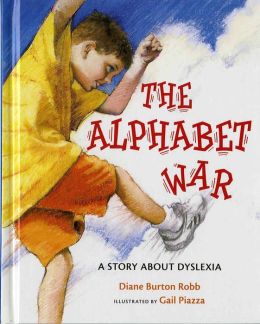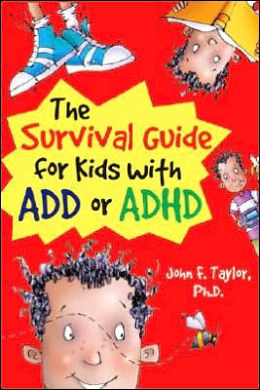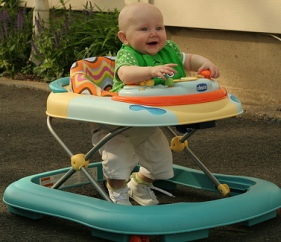Aug
19, 2014
“There are three types of mathematicians, those who can
count and those who can’t.”
Bad joke? You bet. But what makes this amusing is that the
joke is triggered by our perception of a paradox, a breakdown in mathematical
logic that activates regions of the brain located in the right prefrontal
cortex. These regions are sensitive to the perception of causality and alert us
to situations that are suspect or fishy — possible sources of danger where a
situation just doesn’t seem to add up.
Many of the famous etchings by the artist M.C. Escher
activate a similar response because they depict scenes that violate causality.
His famous “Waterfall” shows a water wheel powered by water pouring down
from a wooden flume. The water turns the wheel, and is redirected uphill back
to the mouth of the flume, where it can once again pour over the wheel, in an
endless cycle. The drawing shows us a situation that violates pretty much
every law of physics on the books, and our brain perceives this logical oddity
as amusing — a visual joke.
The trick that makes Escher’s drawings intriguing is a
geometric construction psychologists refer to as an “impossible figure,” a line-form suggesting a three-dimensional
object that could never exist in our experience. Psychologists, including a
team led by Catya von Károlyi of the University of Wisconsin-Eau Claire, have
used such figures to study human cognition. When the team asked people to pick out
impossible figures from similarly drawn illustrations that did not violate
causality, they were surprised to discover that some people were faster at this
than others. And most surprising of all, among those who were the fastest were those
with dyslexia.
Dyslexia is often called a “learning disability.” And it can
indeed present learning challenges. Although its effects vary widely, children
with dyslexia read so slowly
that it would typically take them a half a year to read the same number of
words other children might read in a day. Therefore, the fact that people who
read so slowly were so adept at picking out the impossible figures was a big
surprise to the researchers. After all, why would people who are slow in
reading be fast at responding to visual representations of causal reasoning?
Though the psychologists may have been surprised, many of
the people with dyslexia I speak with are not. In our laboratory at the
Harvard-Smithsonian Center for Astrophysics we have carried out studies funded
by the National Science Foundation to investigate talents for science among those with dyslexia. The dyslexic
scientist Christopher Tonkin described to me his sense of this as a sensitivity
to “things out of place.” He’s easily bothered by the weeds among the
flowers in his garden, and he felt that this sensitivity for visual anomalies
was something he built on in his career as a professional scientist. Such
differences in sensitivity for causal perception may explain why people like Carole
Greider and Baruj Benacerraf have been able to perform Nobel prize-winning
science despite lifelong challenges with dyslexia.
In one study,
we tested professional astrophysicists with and without dyslexia for their
abilities to spot the simulated graphical signature in a spectrum
characteristic of a black hole. The scientists with dyslexia —perhaps sensitive
to the weeds among the flowers— were better at picking out the black holes from
the noise, an advantage useful in their careers. Another study in our laboratory compared the abilities of college
students with and without dyslexia for memorizing blurry-looking images
resembling x-rays. Again, those with dyslexia showed an advantage, an advantage
in that can be useful in science or medicine.
Why are there advantages in dyslexia? Is it something
about the brains of people with dyslexia that predisposes them to causal
thinking? Or, is it a form of compensation, differences in the brain that occur
because people with dyslexia read less? Unfortunately, the answer to these
questions is unknown.
One thing we do know for sure is that reading changes the
structure of the brain. An avid reader might read for an hour or more a day,
day in and day out for years on end. This highly specialized repetitive
training, requiring an unnaturally precise, split-second control over eye
movements, can quickly restructure the visual system so as to make some
pathways more efficient than the others.
When illiterate adults were taught to read, an imaging study
led by Stanislas Dehaene in France showed that changes occurred in the brain as
reading was acquired. But, as these adults developed skills for reading, they
also lost their former abilities to process certain types of visual
information, such as the ability to determine when an object is the mirror image of another. Learning to read therefore
comes at a cost, and the ability to carry out certain types of visual
processing are lost when people learn to read. This would suggest that the
visual strengths in dyslexia are simply an artifact of differences in reading
experience, a trade-off that occurs as a consequence of poor reading in
dyslexia.
My colleagues and I suggested that one reason people with dyslexia may exhibit
visual talents is that they have difficulty managing visual attention. It may
at first seem ironic that a difficulty can lead to an advantage, but it makes
sense when you realize that what we call “advantages” and “disadvantages” have
meaning only in the context of the task that needs to be performed.
For example, imagine you’re looking to hire a talented
security guard. This person’s job will be to spot things that look odd and out
of place, and call the police when something suspicious —say, an unexpected
footprint in a flowerbed— is spotted. If this is the person’s task, would you
rather hire a person who is an excellent reader, who has the ability to focus
deeply and get lost in the text, or would you rather hire a person who is
sensitive to changes in their visual environment, who is less apt to focus and
block out the world?
Tasks such as reading require an ability to focus your
attention on the words as your eyes scan a sentence, to quickly and accurately
shift your attention in sequence from one word to the next. But, to be a
good security guard you need an opposite skill; you need to be able to be alert
to everything all at once, and though this isn’t helpful for reading, this can
lead to talents in other areas. If the task is to find the logical flaw in an
impossible figure, then this can be done more quickly if you can distribute
your attention everywhere on the figure all at once. If you tend to focus on
the visual detail, to examine every piece of the figure in sequence, it could
take you longer to determine whether these parts add up to the whole, and you
would be at a disadvantage.
A series of studies by an Italian team led by Andrea Facoetti have shown
that children with dyslexia often exhibit impairments in visual attention. In
one study, Facoetti’s team measured visual attention in 82
preschool children who had not yet been taught to read. The researchers then
waited a few years until these children finished second grade, and then
examined how well each child had learned reading. They found that those who had
difficulty focusing their visual attention in preschool had more difficulty
learning to read.
These studies raise the possibility that visual attention
deficits, present from a very early age, are responsible for the reading
challenges that are characteristic of dyslexia. If this theory is upheld, it
would also suggest that the observed advantages are not an incidental byproduct
of experience with reading, but are instead the result of differences in the
brain that were likely present from birth.
If this is indeed the case, given that attention affects
perception in very general ways, any number of advantages should emerge.
While people with dyslexia may tend to miss details in their environment that
require an attentional focus, they would be expected to be better at noticing
things that are distributed more broadly. To put this another way, while
typical readers may tend to miss the forest because it’s view is blocked by all
the trees, people with dyslexia may see things more holistically, and miss the
trees, but see the forest.
Among other advantages observed, Gadi Geiger and his
colleagues at MIT found
that people with dyslexia can distribute their attention far more broadly than
do typical readers, successfully identifying letters flashed simultaneously in
the center and the periphery for spacings that were much further apart. They
also showed that such advantages are not just for things that are
visual, but that they apply to sounds as well. In one study, simulating the
sounds of a cocktail party, they found that people with dyslexia were able to
pick out more words spoken by voices widely-distributed in the room, compared
with people who were proficient readers.
Whether or not observations of such advantages —measured in
the laboratory— have applications to talents in real life remains an open
question. But, whatever the reason, a clear trend is beginning to emerge:
People with dyslexia may exhibit strengths for seeing the big picture (both
literally and figuratively) others tend to miss. Thomas G. West has long argued
that out-of-the-box thinking is historically part and parcel of dyslexia, and
more recently physicians Brock and Fernette Eide have advanced similar arguments.
Sociologists, such as Julie Logan of the Cass Business School in London
agree. Logan found that dyslexia is relatively common among business
entrepreneurs; people who tend to think differently and see the big picture in
thinking creatively about a business.
Whatever the mechanism, one thing is clear: dyslexia is
associated with differences in visual abilities, and these differences can be
an advantage in many circumstances, such as those that occur in science,
technology, engineering and mathematics. In physics we know that an engine is
capable of productive work only when there are differences in temperature, hot
versus cold. It’s only when everything is all the same that nothing productive
can get done. Neurological differences similarly drive the engine of society,
to create the contrasts between hot and cold that lead to productive work.
Impairments in one area can lead to advantages in others, and it is these
differences that drive progress in many fields, including science and math. After
all, there are probably many more than three kinds of mathematicians, and
society needs them all.
ABOUT THE AUTHOR(S)
Matthew H. Schneps is an astrophysicist with
dyslexia who founded the Laboratory for Visual Learning to investigate the
consequences of cognitive diversity on learning. He is a professor of computer
science at UMass Boston, and conducts research in dyslexia at the Harvard
Graduate School of Education. Currently, Schneps is writing a book on how the
emergence of e-reading technologies is redefining dyslexia.
Are you a scientist who specializes in neuroscience,
cognitive science, or psychology? And have you read a recent peer-reviewed
paper that you would like to write about? Please send suggestions to Mind
Matters editor Gareth Cook, a Pulitzer prize-winning journalist at the Boston
Globe. He can be reached at garethideas AT gmail.com or Twitter @garethideas.
Article retrieved from: http://www.scientificamerican.com/article/the-advantages-of-dyslexia/?wt.mc_id=SA_MindFacebook
Image retrieved from: https://blogger.googleusercontent.com/img/b/R29vZ2xl/AVvXsEj4vpmP9MEXDo0Qu5o16vNFL-Ow70w909DoCOPscu-Zbw0K2UnIef0eYOQIIerX85Q6wYhXX_vUbOKYu7yKmr9mPkas1e0toLZ340H4STFSgfB8ub1nwggDung2uSZn0KspqWMdGmzidRLl/s1600/child_genius.jpg



















